Teleportation, $97/month, coming soon
What you’re missing about XR Facetime on the Apple Vision Pro
My younger brother moved to the tundra of Siberia and his commute back to New York is something like 37 hours. He comes back once a year, but he’ll often Zoom into family get-togethers. Our remote technology is miraculous, but lacking. His body is trapped in a 13” iPad, he gets passed around from relative to relative, sees only what we let him see, and it’s generally hard to hear him over the ambient humdrum of a party.
We all know the pain of distance in some form: scattered families, long-distance love, Zoom fatigue, commuting on trains, and planes, and buses or whatever it takes to hug or get paid.
Humans have an impeccable drive to flatten the world. My grandparents fell in love through handwritten letters across the Atlantic, and throughout my life, we keep collapsing distance through higher and higher forms of remote connection:
In 2nd grade I’d call Ryan in the summers over a landline after he moved.
In 5th grade my whole class signed onto AIM at once.
In 8th grade I sent stupid pictures to cousins on flip phones.
In 11th grade, we’d video chat with nomadic Uncle Larry via Skype.
Now I carry around a small-glass rectangle in my pocket, and I’m only one click away from anyone’s high-res lag-free touched-up face. It’s still not enough. We’re divinely unsatisfied, and through the great pandemic we learned that glass-to-glass contact is no fill-in for the joy of meatspace. Remote work has limits.
We won’t stop tinkering until we’ve reached the final solution: teleportation.
Yes, teleportation is several orders of degree more ridiculous than even the flying car, but we’ve also never walked it through a proper thought experiment. It’s always mired through some fantastic context: a space war, a mad scientist, a freak of nature.
We’ve never seen it in a consumer society where it costs $97/month, it just works, and it’s irresistibly cool. Everyone’s doing it: your cousins and co-workers, the country people and the city people. Imagine business as usual, except your body and consciousness become untethered from the boring suburban chair you sit in and suddenly you can wormhole your way across Earth: wake up in New York, meditate in Utah, share breakfast with long lost college friends in a Catskills Cabin, before shooting over to Siberia to meet your brother’s 3-month old infant, and then finally zip into Kansas to co-work with Garrett in his parent’s living room.
We should get ready for this reality, because it’s freakishly close.
I’m not saying we’ll ever be able to de-atomize your body and poof you across great Oceans, but I am saying our XR technology is about to get radically good, radically fast, and society will reshape itself as if teleportation was just invented.
Apple’s new Vision Pro isn’t an XR headset, it’s humanity’s first “teleportation device.”
If you and I each cave in and splurge on these stupid-looking $3,500 ski goggles, I think we’d achieve a v1 of teleportation. We won’t ever have to use Zoom again. This is more than screen-to-screen video chat; you’d get the impression that my body is in your room walking around.
The June 5th (2023) Apple Keynote didn’t really tap into the peer-to-peer potential of this device. Almost all of the use-cases shown off were single player: infinite monitors, massive monitors, table-top basketball games, themed theaters, and a holographic butterfly that could flutter onto your finger without a pinch. All very cool. All very isolating.
You probably thought, “why would I spend $3,500 to strap a Macbook Pro with M2 processors to my face so I can watch Ted Lasso by myself on a 200” monitor while melting into the fabric of my couch?” Fair.
The “spatial computing” framing definitely appeals to nerds (like me) more than to the public. People are lonelier than ever, and the last thing they want to do is retreat into a digital, private Wonderland. The social pain of distance is real, and people would pay to fix it.
The keynote did show Facetime in the headset, but it was still trapped in the old paradigm. Look at all these fine people trapped in squares with beveled edges. It didn’t show two holographic bodies in the same room, which, based on the absurd specs in the Vision Pro, is totally possible.
So what could XR <> XR Facetime actually be like?
This GIF from Amelia Kallman shows how cameras can capture the body and digitally ‘teleport’ it across space. What you see is the feed through a Hololens. It’s 4 years old, pixelated, and laggy, but it will get better and better until eventually you won’t be able to tell unless you reach out for a fist bump and realize they’re made of air.
This could be the ultimate destroyer of distance. The commute from Siberia to New York will go from 37 hours down to seconds.
Facetime XR will be the killer app that solves our long-distance woes, converting skeptics into believers.
So if I want to enable the supernatural feat of my brother teleporting into New York, I need a photo-realistic 3D model of the space I’m in. This used to be pretty hard to obtain. I knew a guy (“Vinny from the Future”) who traveled around with this absurdly complicated tripod device in his van, and if you had several thousand dollars to spare, he’d create a 3D LIDAR scan of your house (that you’d have to manually import into some convoluted piece of enterprise software like 3DS Max).
The Vision Pro has LIDAR scanners right on your nose, meaning I can build a 3D model just by walking around the first floor of my parent’s house and looking around. All the walls, chairs, and tables, the seasonal decorations, the positions of shadows, and the new landscaping out back — everything is captured, as if my vision now turns matter into light that can bend around the world.
We’ve been able to make 3D models from iPad LIDAR for years, we just never had a need for them.
I capture, compress, and shoot the space over to my brother through iMessage. Imagine that, your whole house as an attachment in a text message. Now my brother in Siberia puts on his Vision Pro, slides the sleek knob to fade out his apartment, and fades into my parents house.
For this to convince my brother, cartoon avatars won’t work. My avatar has to look like me and breathe like me. So I point the Vision Pro back at myself, and use LIDAR to create a semi-realistic avatar of my face and body. When I put the headset back on, it has cameras that track my eyes, cheeks, and hands. All my micro-expressions and body language in New York will animate my avatar in Russia.
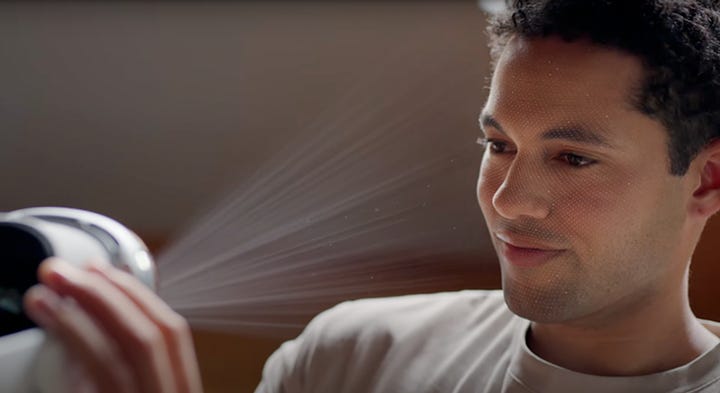

My brother is in VR, and I’m in AR. Distance collapses, and we meet in a shared hallucination. He’s immersed in a digital dream of my parents house, and I see him as a ghost in the kitchen.
Real environments, realistic avatars, real-time micro-expressions. As he walks through his apartment in Siberia, I see him glide around my parents house in New York. Both simulations are synced perfectly in real-time, giving the full illusion of teleportation.
So while it seems like we’re both inside of a real space, it’s technically a computer simulation. Meaning, we can do Harry Potter shit: spawn monitors with our hands, play holographic ping pong, or turn the kitchen table into a 3D model of his Siberian town.
This is the first true iteration of “technology turned magic.” As always with XR, you have to try it to get it. Consumers at home are feeling “meh” about this whole premise, but the lucky few in Cupertino are trembling and in awe of a strange future that is rapidly approaching.
If you get the Vision Pro on a 3-year payment plan, you get teleportation for only $97/month. This is already 3x cheaper than a monthly train ticket from Queens to Manhattan, and this thing also lets me commute to Siberia, and anywhere else in the world.
Of course, I can only “teleport” to other people who have a Vision Pro. Each person becomes a hyper-link, a holo-pad, a node in the network. In many ways, the adoption of this thing is very much like the adoption of the telephone (but this is the “ultimate” telephone). It’s useless to one person, useful for two, and society-altering at scale.
So it’s teleportation, but with a twist: everyone needs to buy in. At the moment, the form factor is the barrier. Even I wouldn’t wear the Vision Pro in public (can’t imagine buying coffee with the googly eyes). However, I do wear AR Rayban glasses from Meta daily. No one notices. They’re functionality is extremely limited (just cameras and speakers, no display), but it’s proven to me that when the technology does shrink, it’s not a barrier to wear everyday.
Computers were mocked as nerd toys from the 1960s - 1980s, but when the connectivity of the Internet hit in 1993, it became cool. It feels like XR is finally exiting a similar 3-decade phase. Since the 90s, XR has been goofy, isolating, and extremely unappealing. But when they enable an insanely valuable form of remote connection, people will get it. This whole thing might quickly spiral from a joke to our new reality.
We’re heading towards a ‘holographic society,’ and life might start to feel like a dream. Distance will become irrelevant, and we’ll all leap out of our bodies like astral travelers. We’ll see shocks across the transportation industry, real estate markets, and workforce. I’m not saying this will lead to some kind of utopia. The whole thing will be super disorienting. But I don’t think XR technology will be isolating. It’s the opposite. It will lead us into a new paradigm of hyper-connectivity, and we’re about to feel the shockwaves of teleportation.
By the end of the decade, I imagine a 12-person gathering at my parent’s house with everyone wearing sleek digital glasses. My brother, his wife, and 7-year old child beam in from Siberia, appearing to us as holograms. No one will need to be trapped in an iPad, and the whole thing will feel surprisingly natural.

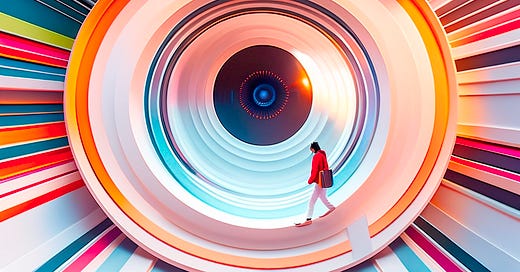



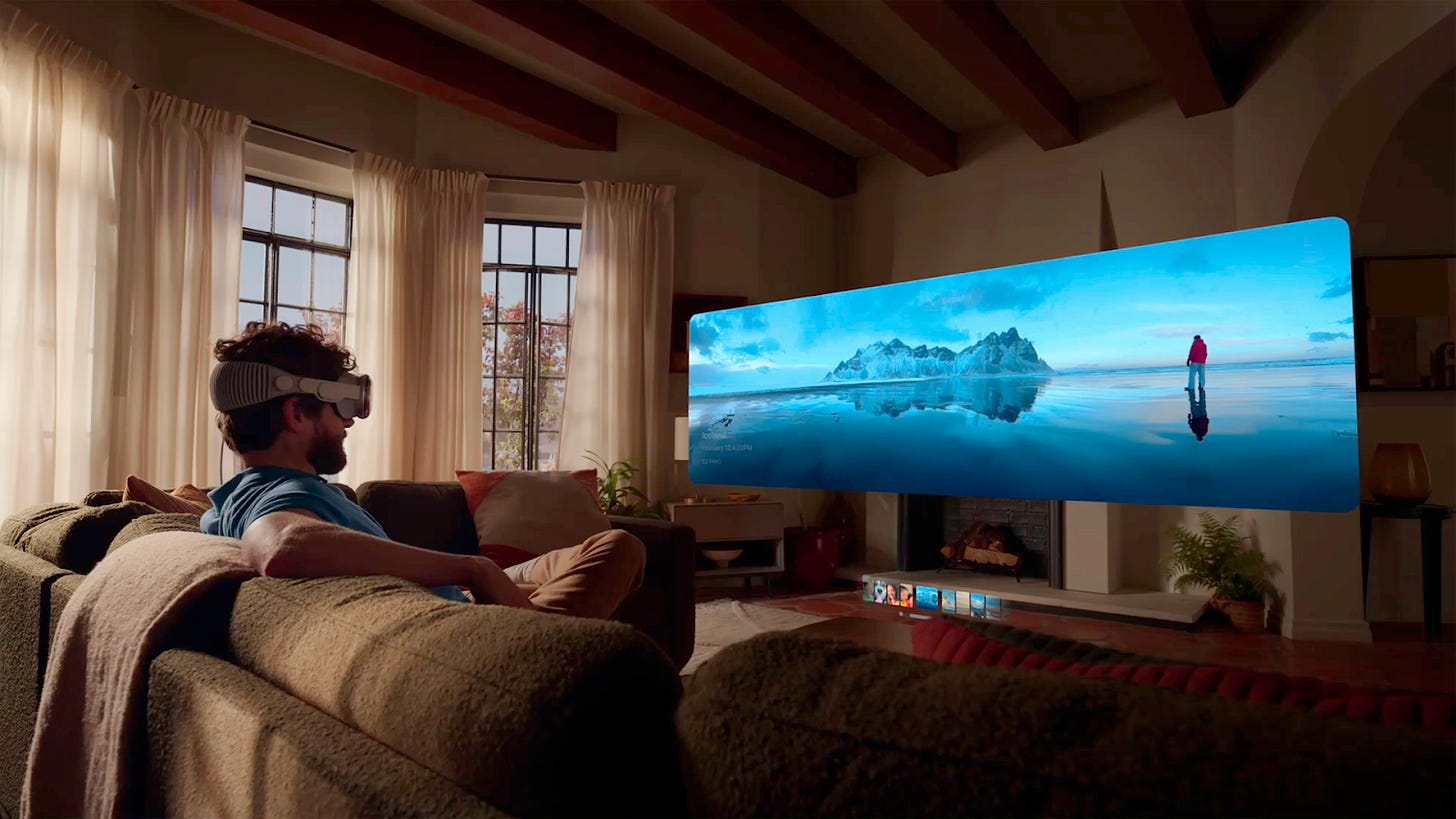
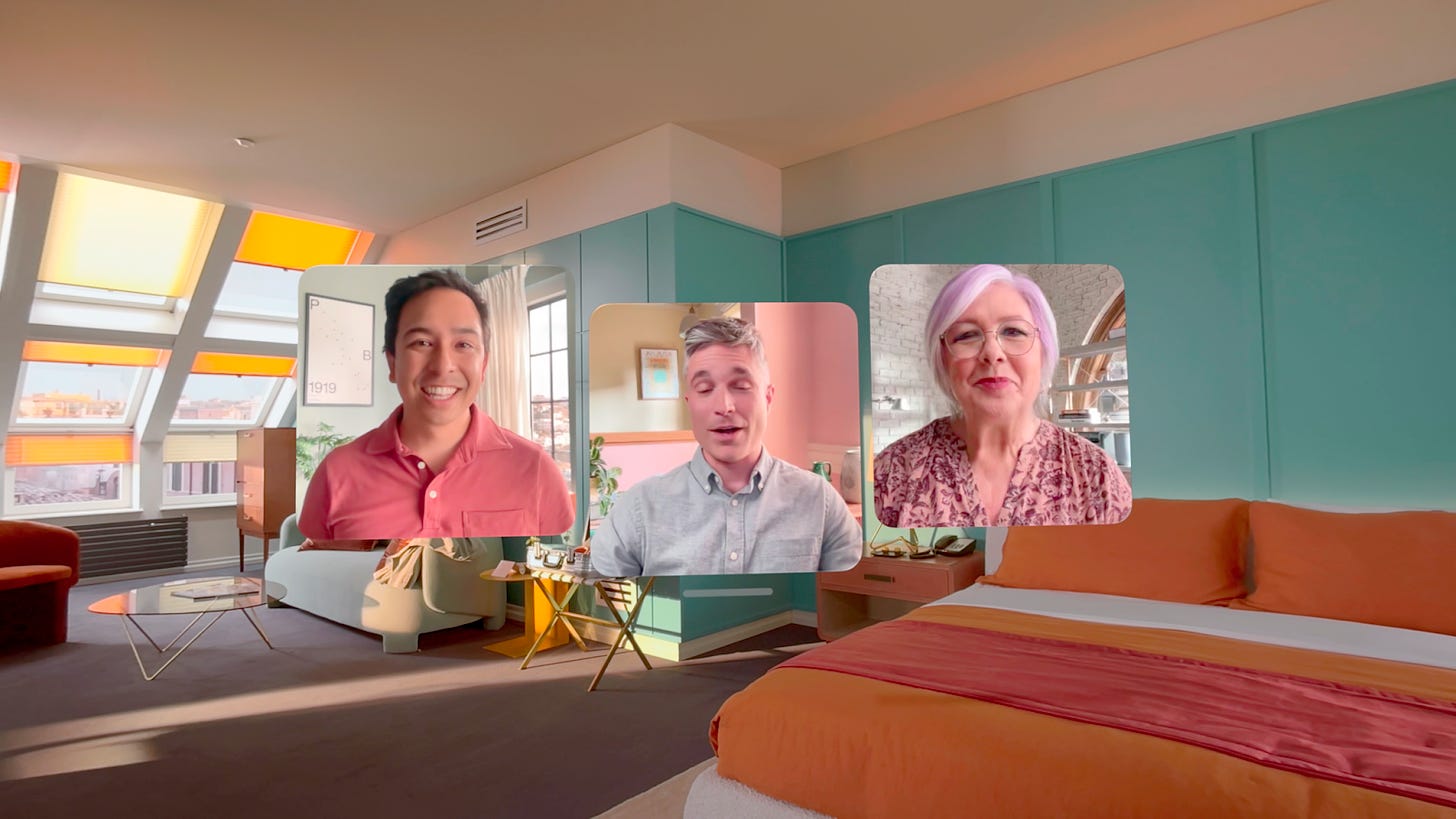
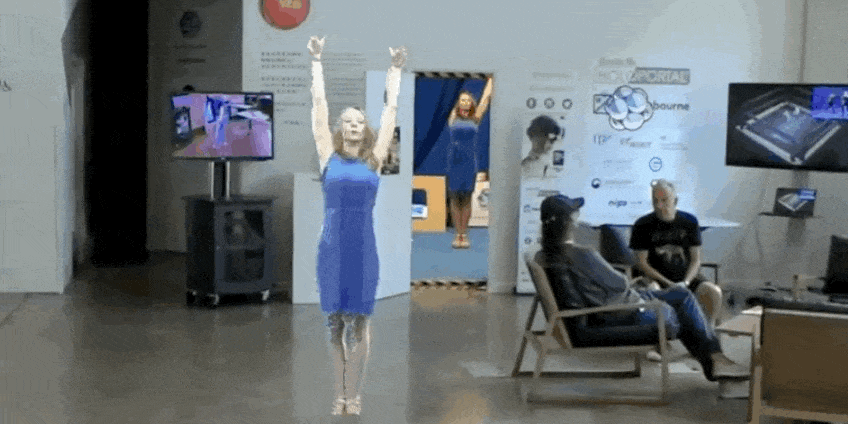
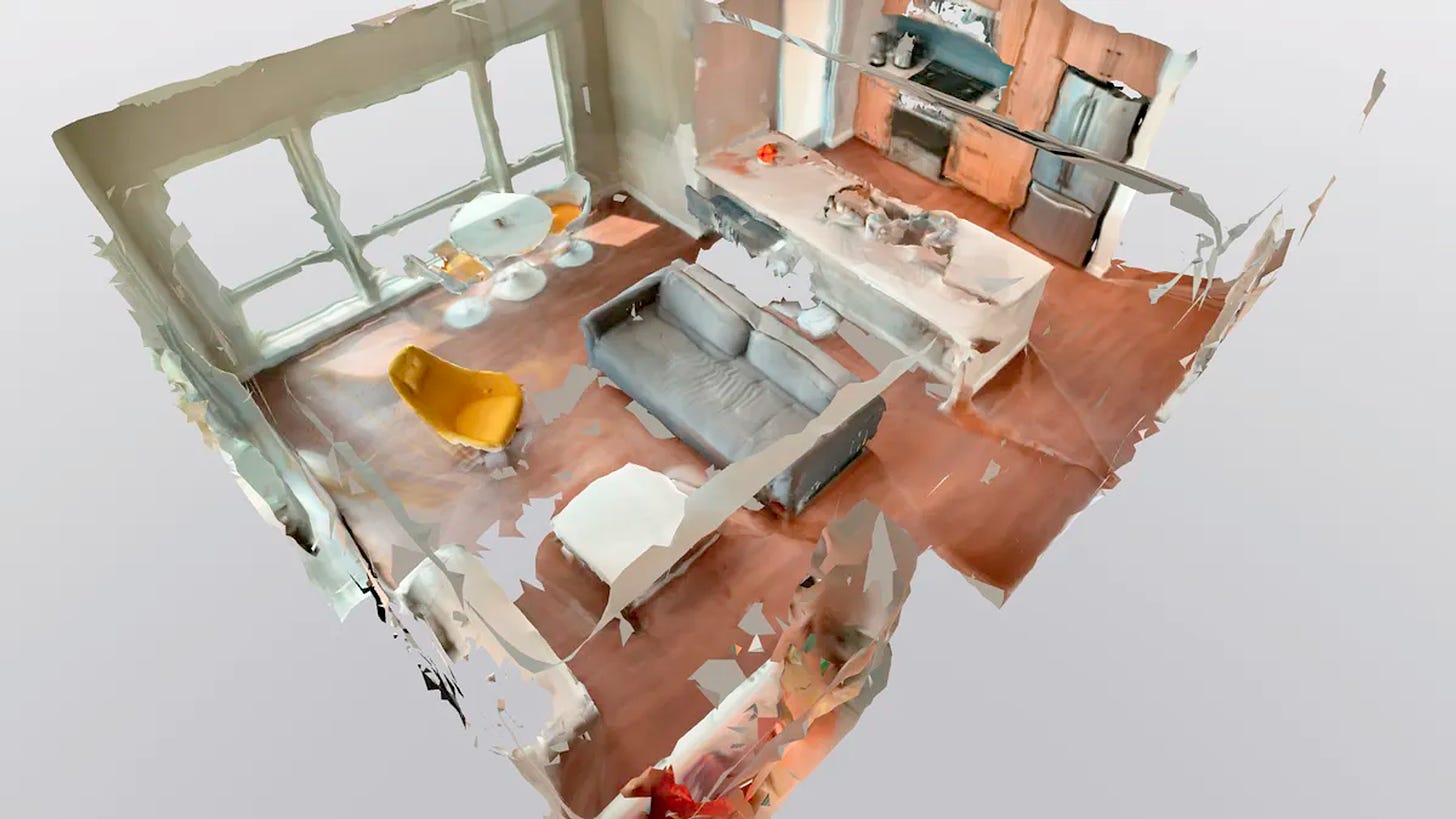
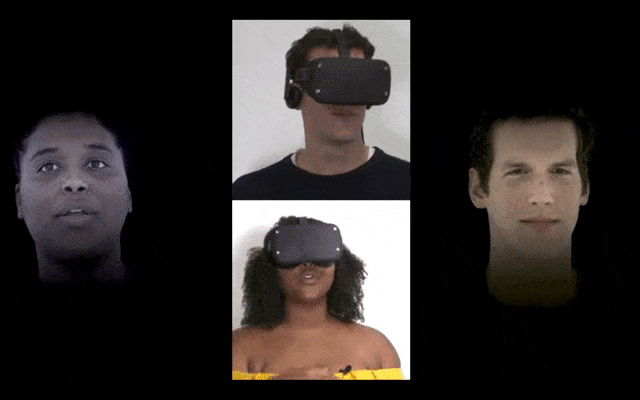
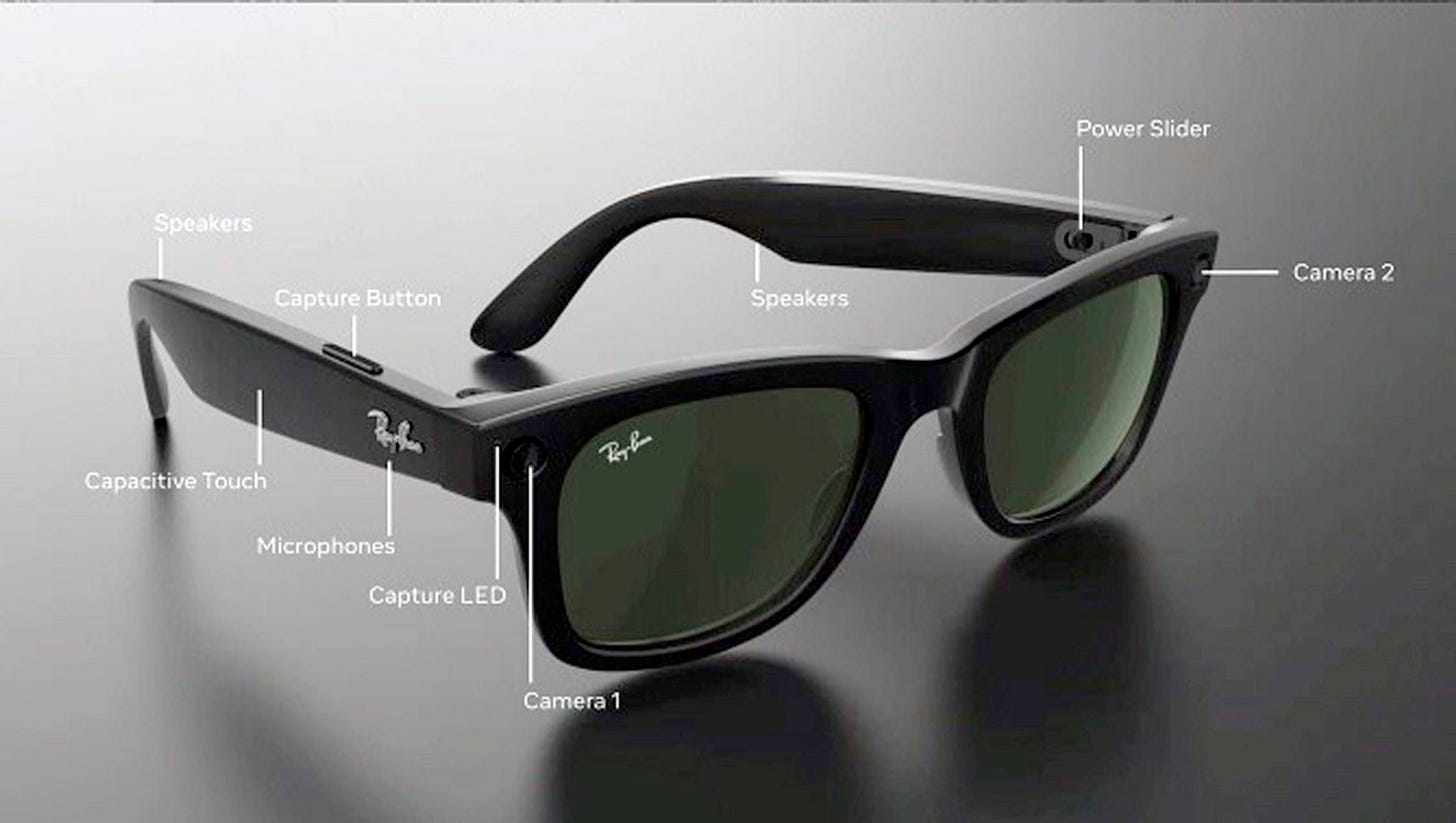

Yup. I’m glad I dug around on your site to find this because I’ve been thinking about this for decades. Read Rainbows End by Vernor Vinge if you haven’t. And you’ll enjoy these when you get around to them. We have a lot to talk about when I get you on the show today!
2009
https://michaelgarfield.medium.com/best-seat-in-the-house-youre-virtually-there-6a855cfd69d1
2013-2020
https://michaelgarfield.substack.com/the-evolution-of-surveillance
2017
https://michaelgarfield.medium.com/the-future-is-disgusting-911379af30fe
2018
https://michaelgarfield.medium.com/being-every-drone-the-future-of-xr-robotic-telepresence-19f12889da78
+
https://michaelgarfield.medium.com/the-future-is-indistinguishable-from-magic-5b9596a4ea
Fascinating.